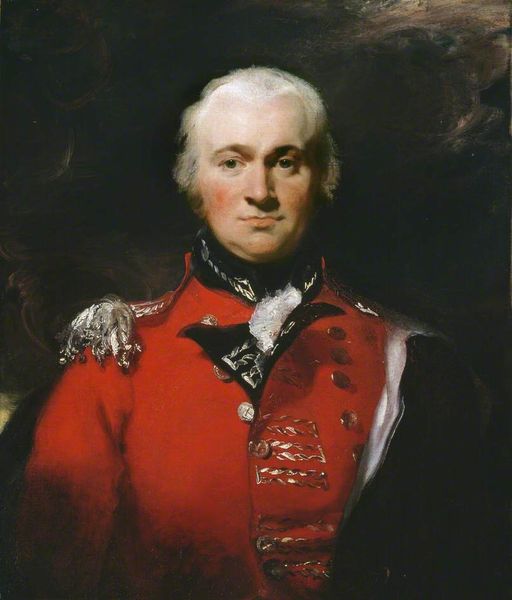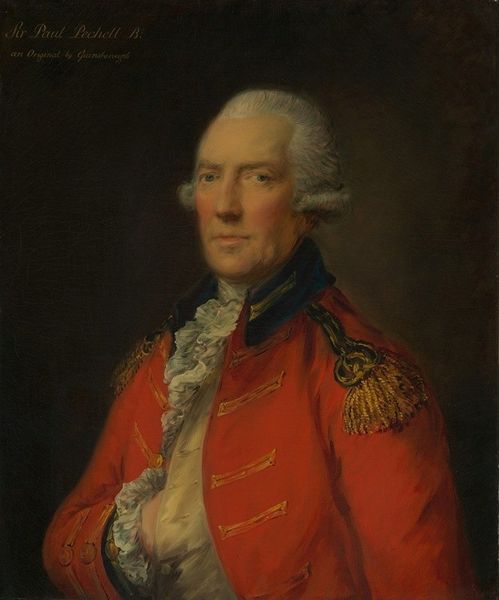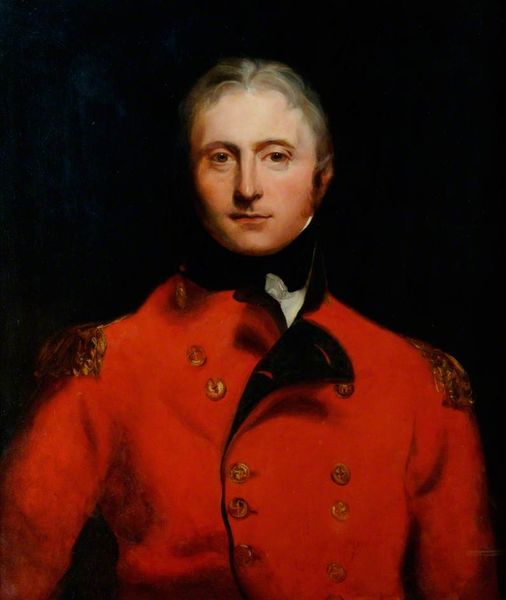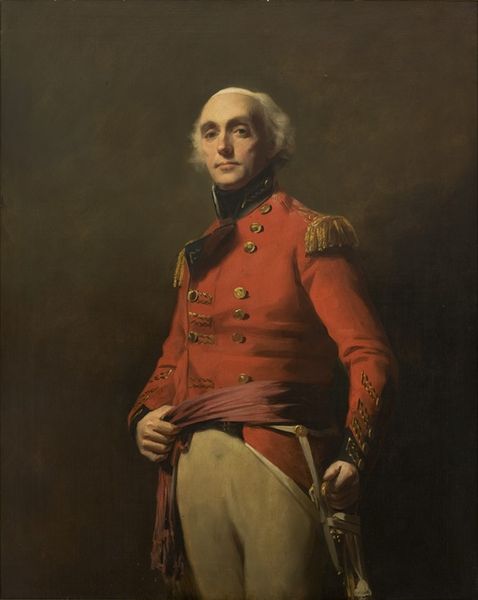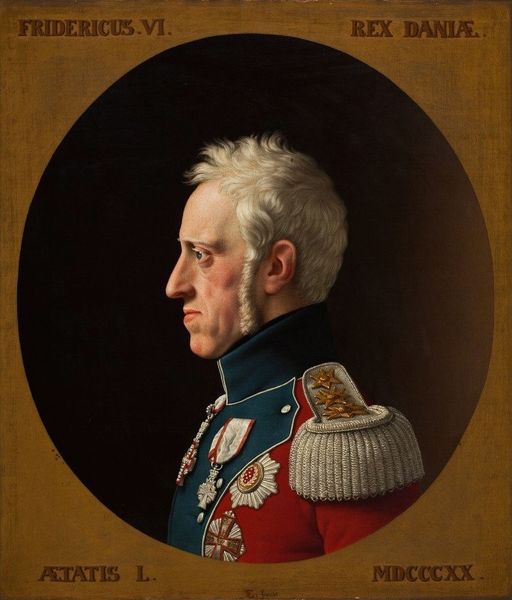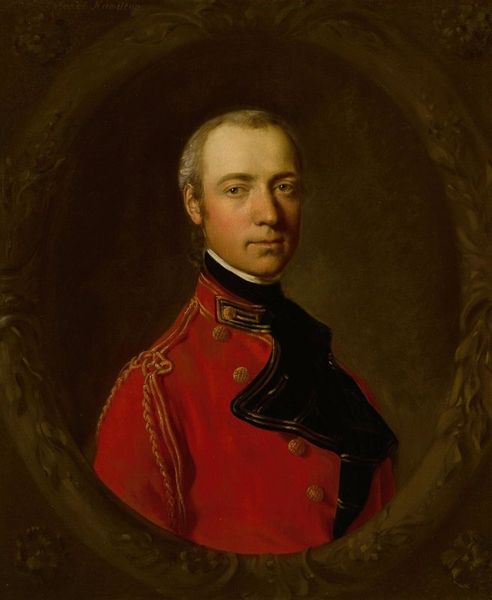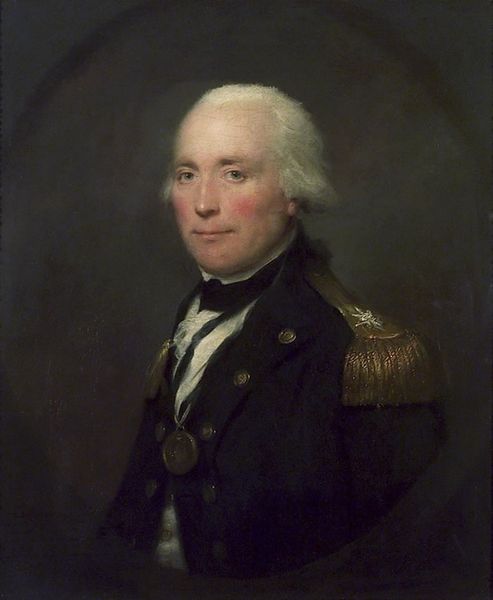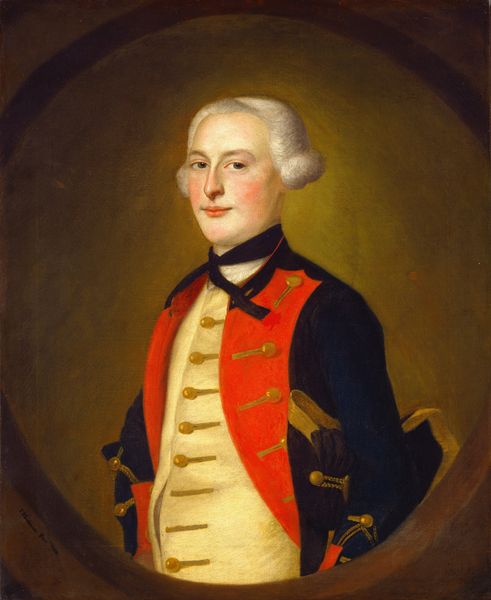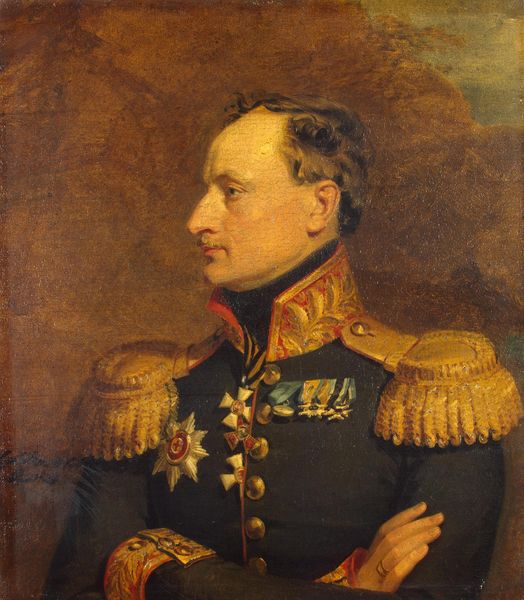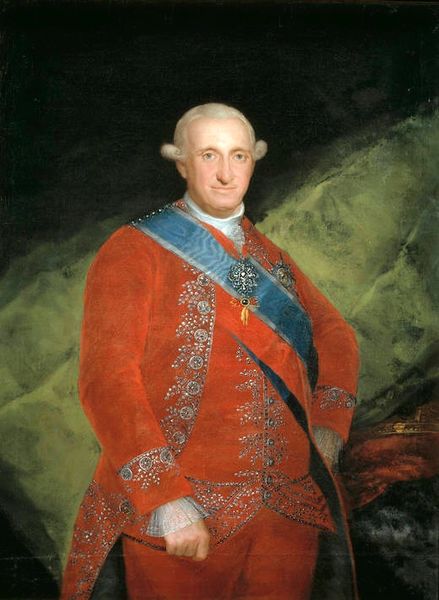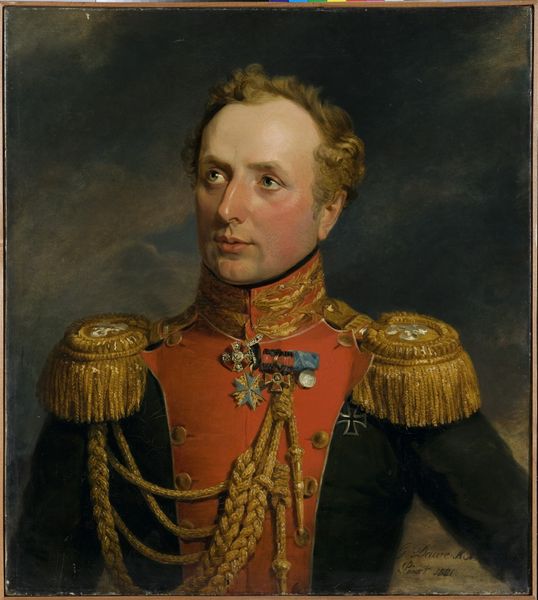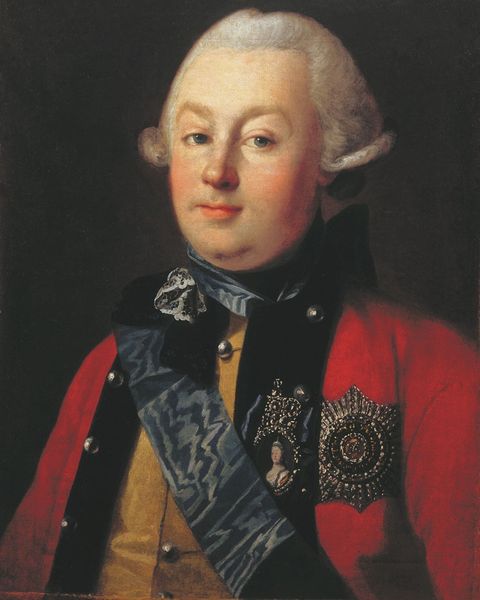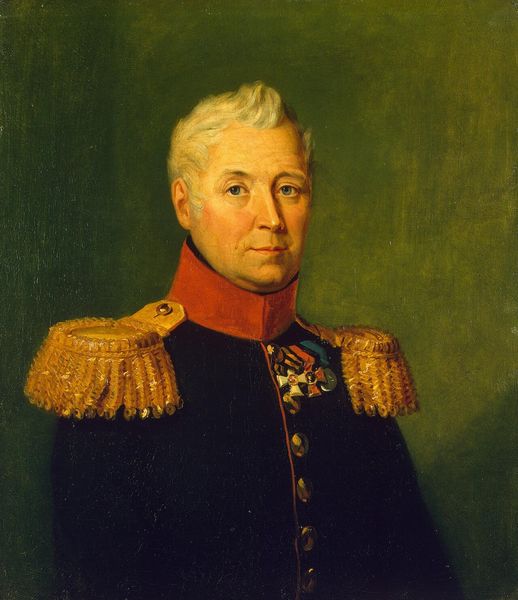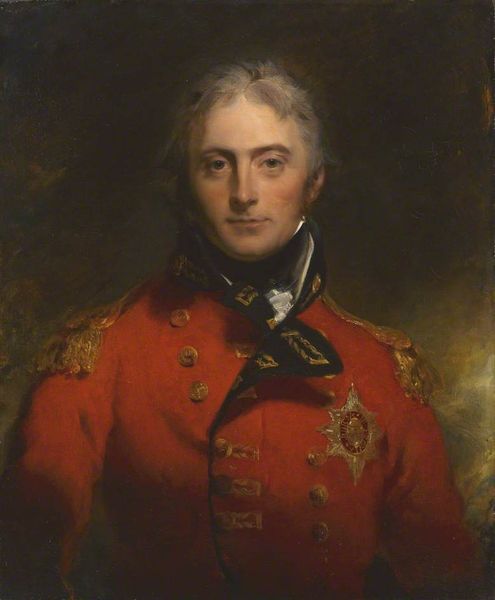
painting, oil-paint
#
portrait
#
figurative
#
painting
#
oil-paint
#
figuration
#
romanticism
#
history-painting
#
academic-art
Copyright: Public Domain: Artvee
Curator: Before us, we have Henry Raeburn's portrait of "Lieutenant General Duncan Campbell," created around 1810. Oil on canvas, as you'd expect, but the execution is particularly striking. Editor: My first impression is formality tinged with weariness. The deep red uniform pops against the somber background, yet his expression seems... distant. There’s a story etched on his face. Curator: Raeburn was a master of capturing the likeness and character of the Scottish Enlightenment elite. The detail in the red coat – consider the repetitive process involved in sewing each button and trimming – speaks volumes about the military’s presence as a labor force. Each uniform was meticulously constructed by tailors of the period. Editor: Absolutely. Red has always signified power and sacrifice. Here, it almost screams authority, yet the man himself doesn't quite exude arrogance. I’m interested in the arrangement of the garments around the neck. The meticulous detail in the threading along his shoulders symbolizes hierarchy and authority, doesn’t it? It gives me pause. Curator: And the labor! Producing textiles of this caliber required considerable manpower and access to raw materials reflecting colonial trade networks of the era. Raeburn’s workshop had to secure the specific pigments, fabrics, and labor needed to deliver pieces on the level befitting such important officials. Editor: Indeed, the craftsmanship is undeniable. But looking at his gaze, the downward curve of his mouth—it suggests more than just martial prowess. I sense a complex internal life, maybe a quiet resignation or burdened reflection on his actions within these globalized markets. Curator: His stern, world-weary presence serves as a direct challenge to any contemporary ideas regarding art as a purely creative pursuit; such an object becomes possible because of a great system that facilitated the acquisition of materials and making this painting possible. Editor: This contrast between the grandeur and vulnerability fascinates me, showing us how icons might also be portraits of lived experience. Curator: Exactly, it offers a rich understanding of the socio-economic machine operating during the Scottish Enlightenment and British Imperialism. Editor: The symbolism woven into the portrait provides, in fact, a powerful testament to both the glories and contradictions within imperial authority. Curator: So, while art provides emotional solace and aesthetic wonder, we shouldn't underestimate its ties to commerce. Editor: Agreed! What began as a regal presentation evolves, finally, into something much more personally introspective, and hopefully invites greater social insight.
Comments
No comments
Be the first to comment and join the conversation on the ultimate creative platform.
